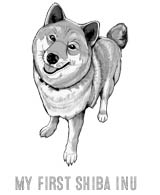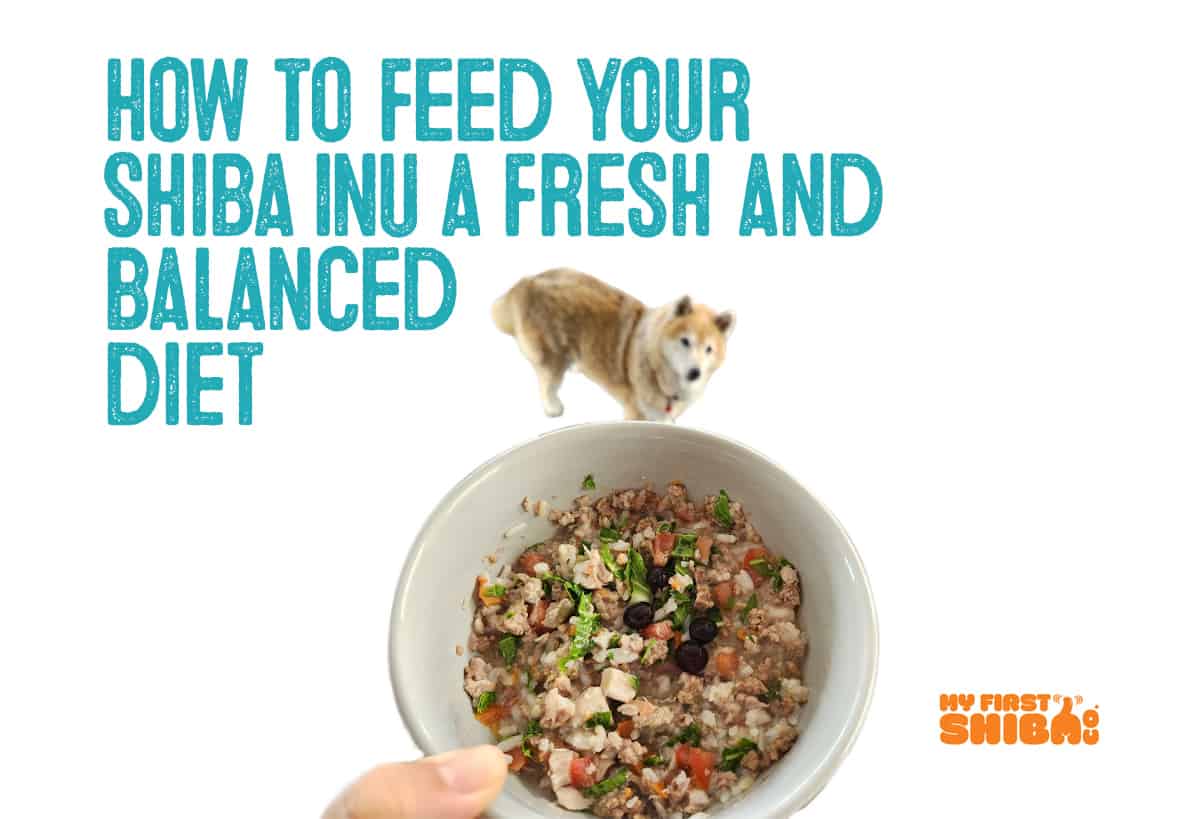
On occasion, our posts contain affiliate links. However, we only recommend products that we truly believe in. For more information, visit my privacy policy page.
Phew, this website is a labor of love and largely a one-woman show so unless indicated, all articles written by J.Tsukamoto
Updated July 22, 2023
Thinking about feeding or at least supplementing your Shiba Inu’s diet with fresh homemade food?
As a concerned Shiba Inu parent myself - I don’t blame you.
Many dog owners are finally learning how most commercial pet “foods” are manufactured - and many are finding themselves worried.
With the multitude of recalls, health problems, and even death - dog owners are looking for answers.
In the mean time, we are researching fresher and safer options that include either buying fresh meals or cooking them on their own.
Common Mistakes of Homemade Feeders
Unfortunately, not many pet owners properly understand how to prepare a complete and balanced dog meal.
In fact a study shows that 95% of homemade dog recipes found in books, online, etc were deficient in at least one essential vitamin / mineral. https://avmajournals.avma.org/doi/abs/10.2460/javma.242.11.1500
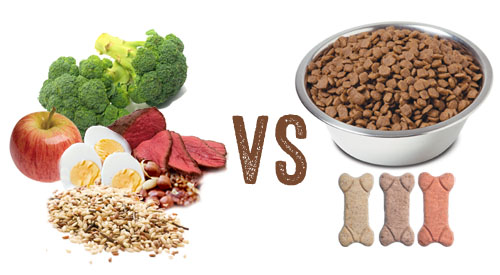
This clearly shows why most veterinarians would not recommend dog owners to make their dogs meals. (I don’t blame them)
But don’t let this dissuade you.
You can learn how to properly balance your dog’s meals - you just need to invest some time and effort into learning the process.
Admittedly, feeding your Shiba Inu or Shiba Inus homemade food on a daily basis is not for everyone.
But everyone can make an effort to incorporate fresh food into their Shiba's daily diet whenever possible.

You can also purchase homemade balanced dog meals to give to your dog occasionally (this option gets expensive).
But even just a little fresh food supplementation can make a tremendous difference. Here’s a scientific study done on Scottish Terriers.
So in other words, this article is not only about feeding your Shiba Inu 100% homemade food - it’s about understanding what you need to do to feed your Shiba Inu “better”.
Whether better is switching to a higher grade “dog” food, adding more fresh food to your dog’s meals, or fulling switching to fresh - every change for the better is all that matters.
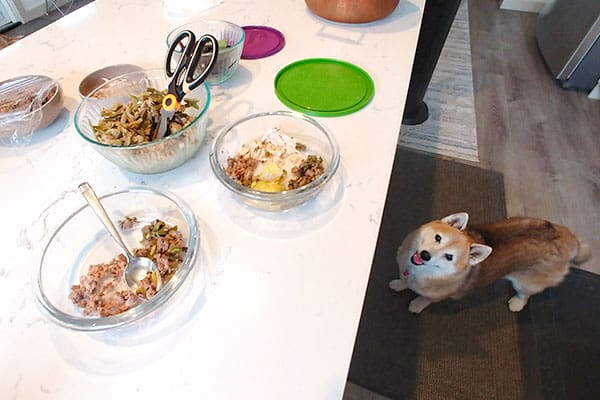
Why Feed Your Dog Homemade?
Let’s try reverse engineering this question and instead ask, “why feed your dog commercial dry kibble?”
Get’s you thinking a bit right?
The most common response is that commercial food is "nutritionally balanced."
That’s true but it’s only because most commercial dog food manufacturers simply "add" low-quality synthetic vitamins and minerals sourced for who knows where.
Or as Rick Woodford, Dog Food Dude puts it, “like fast food laced with vitamins and minerals”.
Dog parents who properly feed their dogs homemade food know this too - and supplement their recipes with high quality vitamins and minerals.
But hold on - even commercial dog food is not as complete and balanced as they claim to be....
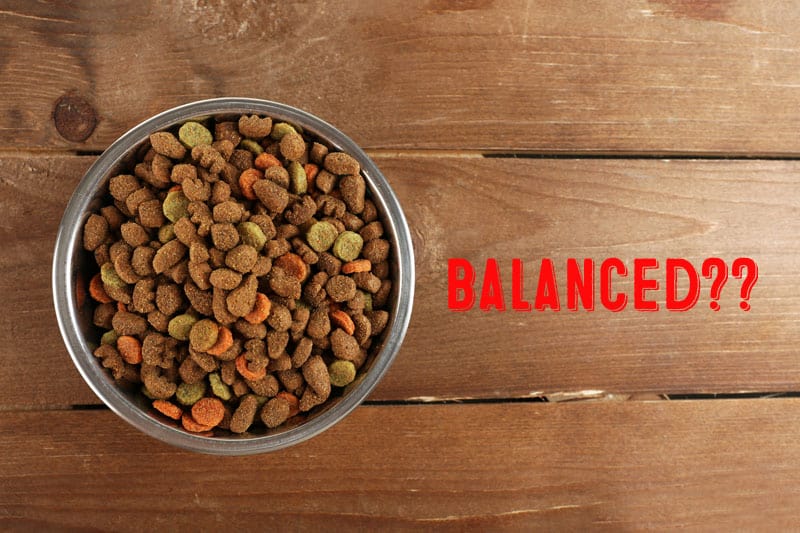
Not as Complete as It Seems...
In a European scientific study, results showed that 94% of wet dog food and 61% of dry dog foods were not balanced properly.
Some had either too much of certain vitamins or minerals while others had too little. Read the full study here.
Other responses for only feeding commercial dog foods include, easy, convenient, and cheap.
Ahh yes. Nothing can be faster than pouring dry cereal into a bowl.
After all, everyone seems so busy with daily life that taking a few extra moments into making your dog's meal better is surely out of the question?!
Yet, we seem to always find extra minutes here and there to spend mindlessly scrolling social media feeds on the Internet.
In other words, everyone should have "some" time to invest in improving our Shiba's meals.
But what about the reasons NOT to feed your dog commercial, dry kibble?
Honestly, there’s just too many reasons to list to fit into the beginning of this article so I'll save it for later.
Simply put, making the effort to feed your Shiba Inu a fresh, nutritious “human grade” food - and doing it right - is the most impactful thing you can do to ensure your Shiba Inu thrives.
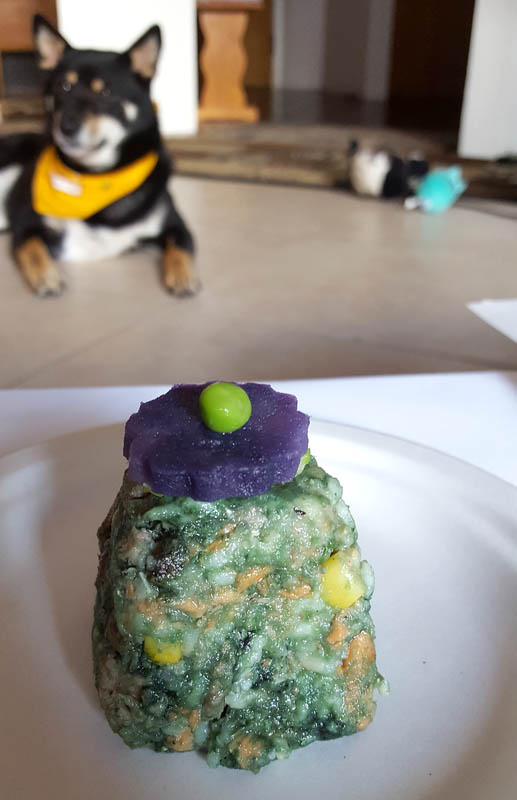
Fresh human grade food is loaded with non-synthetic vitamins and minerals, and more importantly, secondary metabolites like phytonutrients that have not been rendered useless due to ultra high heat processing.
Feeding your dog homemade fresh foods is better for the exact reason eating fresh, natural foods is better for humans.
Plus, like humans, dogs enjoy food AND variety.
Food brings happiness to us and them.
Yes, mammals can enjoy good meals just like we do.
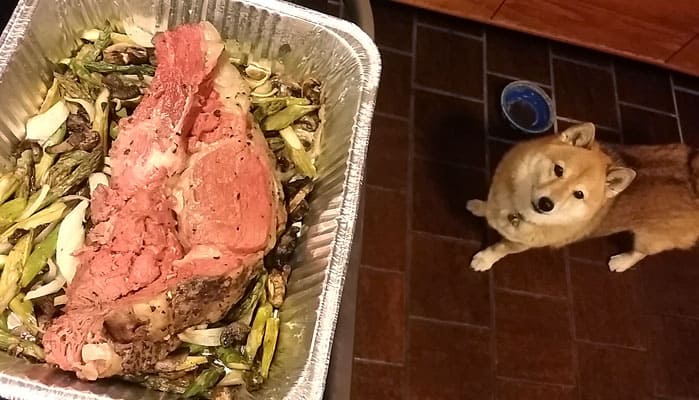
Would you look forward to living the rest of your leaf eating a complete and balanced dried, preserved survival type meal?
And eating that EXACT same meal, day after day, after day?
If good fresh food can make your Shiba Inu delighted and healthy, isn’t it worth the effort?
The History of Commercial Dog Food
Modern domestic dogs evolved roughly around 30,000 - 40,000 years ago.
Commercial dog food evolved around 150 years ago.
I wonder how those poor dogs could survive 30,850 years without kibble? (note the sarcasm)
Well survive and thrive they did.
And how did they do it?
Like the thousands upon thousands of mammals - including humans, did - with natural foods. Who woulda thunk it??
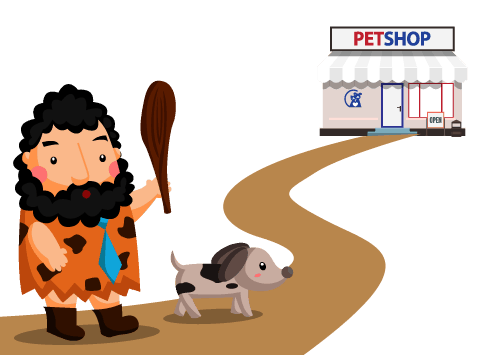
With humans it took a few decades for authoritative bodies and physicians to boldly state that highly processed foods are a detriment to our health and that we should try to eat as much fresh proteins, fruits, and vegetables as possible.
But what about our faithful and trusting dogs?
Why is it okay to feed our beloved canine family members highly processed, preserved kibble made by largely substandard, even horrid ingredients?
Why Is It Always "About The Money"???
No surprise, but it’s the usual culprits - money and profit.
Commercial dog food manufacturers are mostly owned by the biggest corporations such as Mars, Nestle, J.M. Smuckers, and General Mills.

And boy do these companies make profit a big priority.
Their pet food divisions are especially important to them because they are able to use their leftover food waste unfit for human consumption in their pet food products.
A big win that makes for exceptional profit margins.
Because of this commercial pet food manufacturers make a concerted effort to develop close relationships with the veterinary field as well as the governing bodies that regulate pet food manufacturing.
Doesn’t sound right, does it?
Well it’s not. I could write and present research and facts about this subject for days but because this topic is not the main subject of this post, I’ll keep it tidy.
Hopefully, this overview has concerned you enough to look deeper into this topic. You can start by checking out the work by Susan Thixton at The Truth About Pet Food.
As more and more pet owners learn about the state of commercial dog food, curtains are being lifted over previously ignored facts and data.
Because of this, there’s a lot more resources to turn to research for these types of topics.
One of our favorite papers is researched and written by a Harvard University student who delved deeply into the complicated web of the pet food manufacturing industry and the authorities who govern and regulate them.
The Harvard Library has given digital access to this paper on their website.
To wrap up this section, have you ever heard of the popular line, “don’t ever feed your dog table scraps - it’s dangerous”?
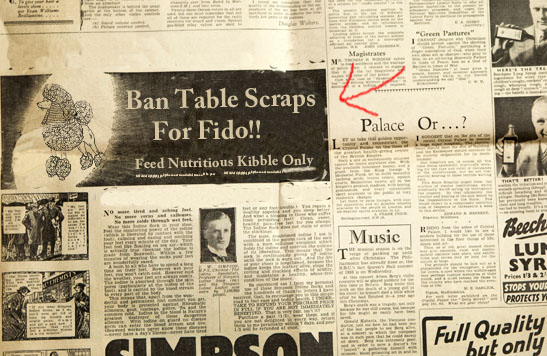
Guess where that statement originated from?
No surprises here.
That statement came from the Pet Food Industry during a slump in pet food sales in the 1960’s. They cleverly devised an advertising campaign called “Ban All Table Scraps - Switch To Kibble”.
It worked and everyone's been afraid to give our dogs table food since.
The power of media and commerce is absolutely immutable.
Pros of Homemade Dog Food
Fresh food has more naturally derived vitamins and minerals whereas commercial dog food manufacturers just add low quality synthetic vitamins and minerals to make their meals be considered “balanced.”
When you offer your dog fresh food, you are being kind by not exposing your dog to synthetic additives, rendered “meals”, high heat pasteurization, low quality “left-over” ingredients, chemicals, preservatives, and dangerous chemicals / diseases that often lead to recalls.
Currently, conventional medical wisdom states that a fresh diet filled with fruits, vegetables, healthy fats and proteins correlates to better health, happiness, and risks for diseases in humans.
On the other hand human diets that are highly processed are highly shunned due to the correlation with decreased health and increased risk for disease.
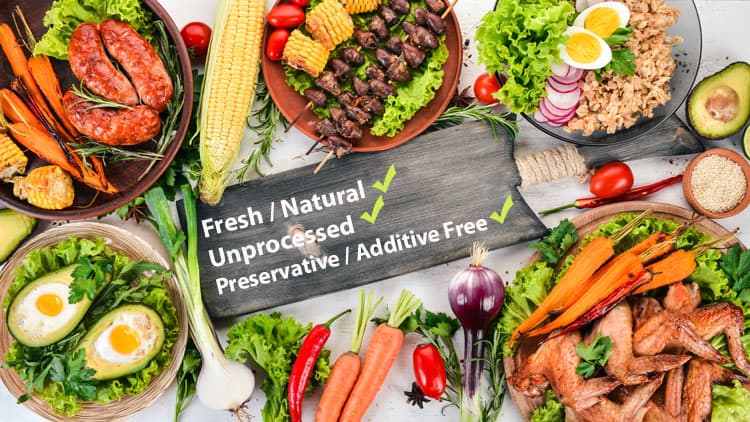
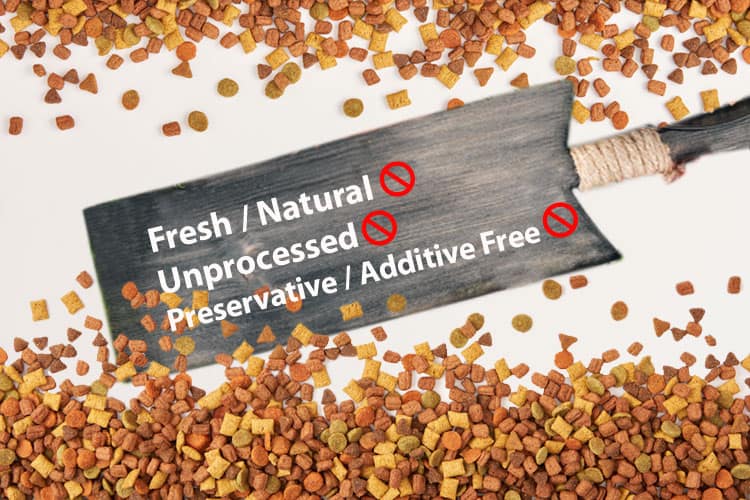
So why shouldn’t this fact “apply” to dogs who are mammals too?
Money and profit - again - are the usual culprits.
Commercial dog food is a multi-billion, maybe trillion dollar industry that has masterfully intersected their interests into the veterinary field.
Isn’t this an obvious conflict of interest?
Yes, of course - but because pets are not people (and don’t have a VOICE) , most people simply gloss over this otherwise large “elephant in the room”.
Financial bias in scientific studies has always been and will likely always be problematic.
So while I’m not definitively saying that veterinary institutions / nutrition advice shouldn’t be trusted because they are funded by the pet food industry - I am saying that I do believe these issues should be acknowledged and considered.
Even noted veterinarian “skeptic”, the Skeptvet Brennen McKenzie, acknowledges that financial bias is a real issue in scientific research.
Dr. McKenzie’s Skeptvet blog is informative, but the information is solely based on evidence-based research - and not much else.
Unfortunately, it’s obvious that due to the structure of the pet food industry, a large-scale “evidence” based study on commercial pet food will not come easily.
Evidence-based research has a lot of pros but the obvious major con is that “in-between time” from when a problem is presented and when the evidence-based research is completed.
Until then, do pet owners simply have to wait and trust what the pet food manufacturers are selling to them while ignoring conventional wisdom simply due to the “lack of evidence?”
Therein lies one of the biggest problems about “evidence-based” medicine - you have to “wait” for the evidence.
Here's a research article about the issues with EBM (evidence based medicine) in a veterinary setting.
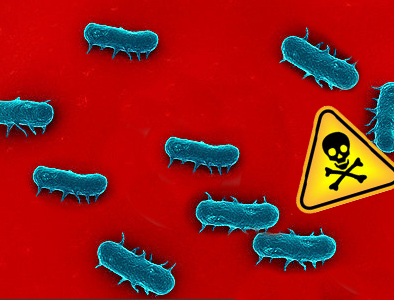
In the meantime are consumers meant to be okay with the fact (“evidence”) that commercial dog food has been found to:
- Contain toxins, including but not limited to pentobarbital (euthanasia drug)
- Contain 4R’s, rendered “meals” consisting of diseased, dying, disabled, and dead animals
- Contain melamine
- Contain mold
- NOT be “complete and balanced” as claimed….
Cons of Homemade Food
Making homemade dog food correctly takes time, dedication, and a bit of brain power.
Or at least brain "effort".
You can’t just search online for “homemade dog recipe” and think you’re all set.
An overwhelming majority of homemade dog food recipes online are not balanced and deficient in multiple nutrients.
This is by far the main reason most veterinarians discourage dog owners to feed homemade, which is understandable.
However, don’t let that discourage you.
It’s not impossible to learn how to properly balance your pet’s food.
But it does take a strong willingness to learn and follow correct procedures.

More Time and More Money
Compared to pouring a bag of dry kibble into a bowl, preparing homemade quite a bit of time and quite a bit of effort.
Even more so, if you have more than one Shiba!
Luckily, you can save a lot of time by making a large batch of meals at once and then freezing. Just to be sure to plan ahead and set a few hours out of your day to get this task done.
Using fresh human grade ingredients will undoubtedly cost more than dry kibble - especially proteins.
However with smart planning and shopping, the costs don’t turn out as bad as you may think.
Ecological Impact / Sustainability
One of the few positives of commercial pet food is the fact that food that is normally non-consumable to humans is used to feed pets.
This helps to reduce waste and the need to slaughter more animals to feed both humans AND pets.
If every one of the millions of dogs and cats in the U.S. were fed homemade foods with human cuts of meat - it'd be like feeding an additional millions of humans.
To lessen the strain, it’s perfectly fine and encouraged to use less desirable cuts of muscle meat like heart or tough cuts full of cartilage that humans tend not to eat.
Realistically it would be ideal if there could be a happy medium.
If pet food companies could produce ethically sourced dog food free of toxins and unsafe rendered “mystery meat” - that truly would be an ideal situation.
However, until the pet food industry takes serious strides in improving safety in their manufacturing processes - it’s safer to be hyper vigilant when deciding how and what to feed your Shiba Inus.
Costs To Feed Homemade Dog Food
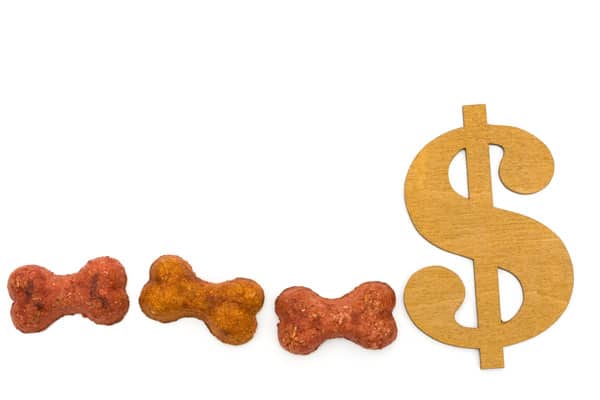
The costs of homemade dog food will vary based on two main factors - how much time you’re willing to spend shopping for the ingredients and how much time you're willing to put into preparing the food.
So if you’re willing to both dedicate time to source quality ingredients and prepare most of the meals - the costs are quite reasonable.
In many cases, the monthly costs ends up being only a bit higher than premium dog food.
However, if you don’t have much time to spare and need to purchase human grade fresh dog food, the cost rises exponentially.
It’s kind of like a pendulum - the more time, the less money - the less time, the more money.
Here’s a basic example using one of my Shiba Inus.
If I were to buy and prepare all of her meals for a month - the costs (including supplements) would be between $80 - $110 / month.
Not too bad right?
On the other hand if I decided to choose the most premium “already made” human grade dog food option, the monthly costs would spike up to about $140 - $170 / month.
Even at that price point, some would say that it’s still not a bad price to pay to ensure our dog gets fresh, healthy food.
Now if you have two, three, or even more Shiba Inus, then it’s likely that’d you want to stick with the first option of self preparation.
Optionally, you could do a combo of the two methods depending on your time and budget considerations.
Tips on Shopping For Fresh Food
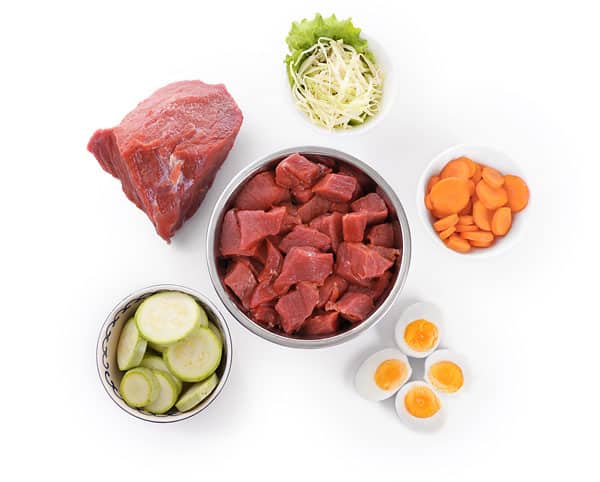
The two biggest tips for saving money on ingredients are shopping sales and stocking up.
Proteins will take up the highest portion of a budget so attention should be focused on getting good deals on meats at your grocery store, meat supplier, or even online.
Be on the lookout for weekly super sales such as $5 Friday and the like. Companies like Costco and Sams Club are also good options for buying proteins in bulk.
I’m always on the lookout for large lean cuts of beef like bottom round, top round, top loin, and sirloin.
For ground beef, I try to look for 85% or 90% lean beef. Lean ground beef has more nutrients than ground beef with higher fat content.
Raw proteins like beef, chicken, and lamb freeze very well, so stock up on good deals when you can. An extra freezer would be handy in this situation.
Beef heart is excellent for dogs and affordable as well. Unlike liver, beef heart is not an "secreting" organ and can be given in portions just like other “muscle” parts of beef.
Most states have local slaughterhouses where you can inquire about purchasing sub-premium offal cuts such as -
- Beef heart, beef face meat, beef tracheas, beef lungs, beef kidneys, beef esophagus, beef pancreas
- Chicken necks, chicken backs, chicken giblets
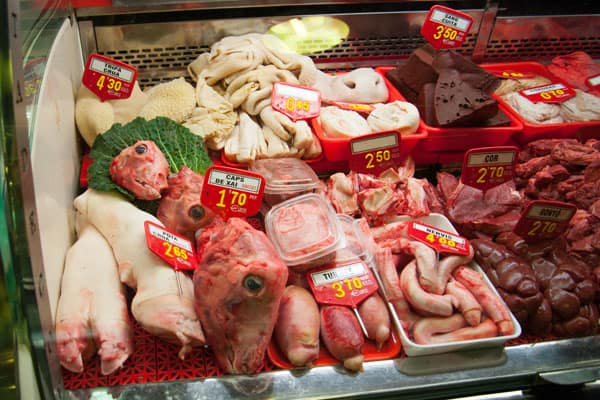
Dog owners who feed completely raw commonly use these sources for their dog food, but they can also be incorporated well into a fresh lightly cooked dog meal.
Other ingredients I like to stock up on are frozen vegetables, frozen fruits, and certain canned foods like canned pumpkin and sardines. (Some might be objected to anything canned, but we believe moderate use is perfectly fine ..)
When fresh fruits and veggies are available and on sale I’ll include that in both my human family and dogs family meals as well.
Starches are nominally priced and I prefer using high quality brown rice, sweet potatoes and quinoa. I don’t use any processed pasta as it’s not as healthy as the other options.
For those of you worried about arsenic levels in rice - you really shouldn't be. Both humans and dogs who enjoy a varied diet can safely consume rice in moderation.
Tip: To drastically reduce arsenic levels in rice (brown rice has the highest), simply soak the rice overnight before cooking and rinse thoroughly. Then cook rice in a rice to water ration of 5:1. These steps alone reduce arsenic levels up to 80%.
For even higher arsenic reduction, try these scientifically proven cooking methods.
The Importance of Supplements
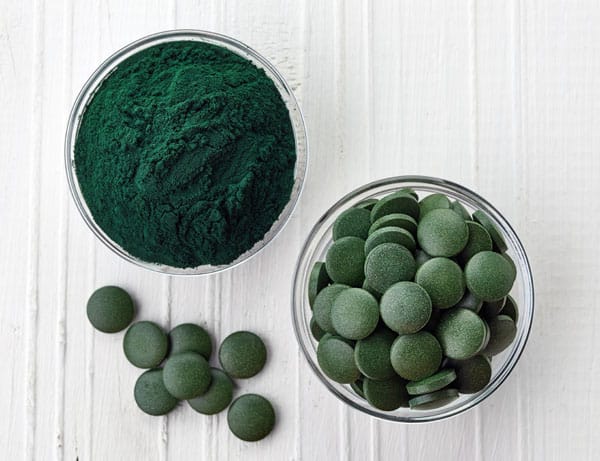
Supplements are almost always essential to balance homemade meals.
An unbalanced and nutritionally incomplete diet is the main reason why veterinarians discourage dog owners from feeding their dogs homemade dog food.
Thankfully, this issue can be resolved by adding the correct amounts of quality supplements to the homemade food.
Commercial dog food manufacturers do the exact same thing except that they typically use low quality synthetic supplements - often from China.
There are a few companies that are run by certified veterinary nutritionists that sell supplements especially for this purpose.
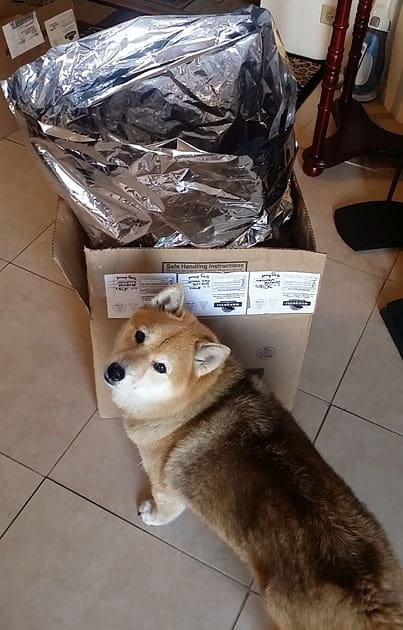
Dogs of different ages with various health issues may need more or less of certain vitamins and minerals.
But in general, if your Shiba Inu is a healthy adult, then getting a complete vitamin and mineral supplement like Balance It’s Carnivore Blend is the easiest option - especially for those new to making homemade food.
If you’ve been making homemade food for a while and know the basics of balancing whole food ingredients with additional supplements, then I'd rather use Dogzymes Complete as well as other individual vitamins / minerals on a "as needed" basis.
A good fact to note is that the most common nutrients deficient in a homemade dog food diet are:
- Iron
- Vitamin E
- Vitamin D
- Zinc
- Calcium
- Copper
- Choline
- Vitamin B-12
Calcium is the mineral that needs special attention. It's one of the minerals that is the most deficient in homemade dog diets.
Most supplement "blends" don't have enough calcium in them to completely balance a dog's meal.
This is why most homemade dog food guides include the use of calcium supplements or "egg shell powder".
Egg shell power is one of the best ways to naturally add calcium to a dog's homemade diet. All you need is a good coffee grinder to grind the shells done to a fine powder.
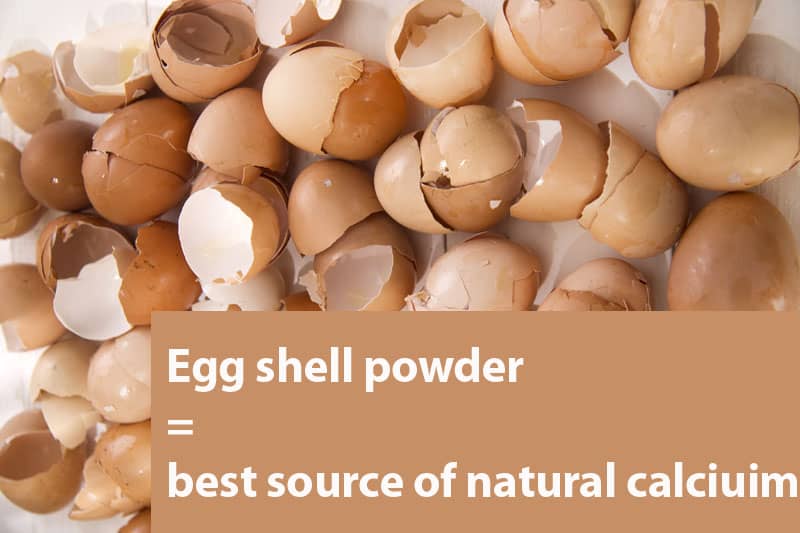
Adding too many supplements is not good either.
There’s a risk of adding too much of any given nutrient, which in turn can negatively affect your dog’s health.
This is especially true for synthetic nutrients, which is why getting vitamins and minerals from fresh sources like egg shells or raw, meaty bones is always preferred.
This is why in the world of dog nutrition, knowledge and research is not only key - it’s mandatory.
The Importance of Following Guidelines
It’s unfortunate to learn that studies have shown that even with proper instructions and guidance, most dog owners do not follow directions carefully, resulting in unbalanced meals.
Dog owners in the study would either leave out ingredients or substitute ingredients without knowing the effect on balancing the meal.
This is likely attributed to the fact owners might think a dog’s diet is similar to a humans diet and a bit of change here or change their couldn’t hurt right? After all, I’m using fresh food to start with!...
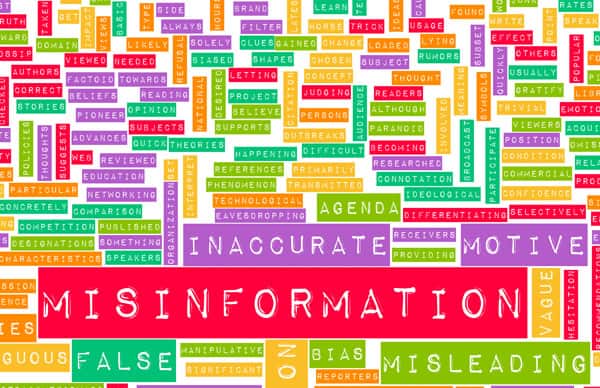
It's true that varying a diet will help ensure vitamin / mineral requirements for a dog in the longer term.
However, it's still true that one has to understand these requirements before assuming that switching ingredients here and there is "good enough".
For example, not many would realize that foods high in oxalic acid like spinach can block calcium absorption.
For this reason, foods like spinach should simply be given at a different time from calcium supplementation.
Dog nutrition requirements are quite a bit different from humans which is why educating yourself before starting is so critical.
The great news is that this problem is solvable by simply taking the time to learn about dog nutrition from the RIGHT sources.
In an actual scientific survey, researchers found that a large majority of homemade dog food recipes found online were deficient in nutrients.
Even recipes developed by veterinarians were found to be deficient.
The only recipes that were 100% nutritionally balanced were formulated by veterinary nutritionists.
This makes it clear.
To ensure that your homemade recipes are balanced - follow the instructions and guidelines from reputable sources and / or veterinary nutritionists.
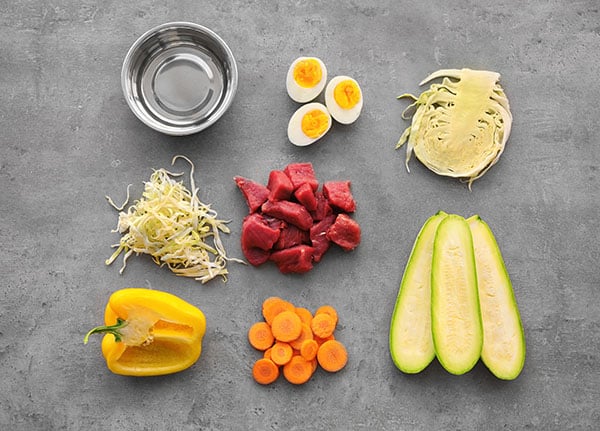
You likely won’t find completely balanced recipes on a general recipe blog, or a mommy blog, or a social media post. It takes a bit more time and research to find the best information available to the public.
Luckily for you, we at My First Shiba Inu pride ourselves on doing just that.
For our content on Shiba Inu nutrition, we only follow guidelines from reputable sources like veterinary nutritionists and veterinarians who have a deep background in canine nutrition.
Check out our our resources section at the end of this article.
We don’t accept any requests to recommend a certain type of canine food over the other.
Our number one goal is to provide our readers with the absolute best and latest information about canine nutrition.
We believe that feeding our Shiba Inu the freshest and best food will make a profound impact on their overall health, vitality, and happiness. What more could we ask for?
What About Puppies?
The nutrient needs of puppies are immense.
Any deficiency in a puppy’s diet could carry long term health consequences as well as stunted growth.
For these reasons and for the fact that raising a new puppy is hard enough - we don’t recommend making your own homemade food for puppies.
Instead, we recommend high quality puppy food from a reputable company AND supplementation with fresh foods and additional omega-3 fatty acids.

Why omega-3 fatty acids?
Omega-3 fatty acids may possibly improve brain growth and function in developing young puppies.
Remember the word “may”.
As with the majority of supplement claims, there is no definitive proof of this claim. However, multiple scientific studies have at least shown “some” positive associations with omega-3 supplementation and neuroprotective capabilities.
Additionally, there are multiple cases of humans who were basically “brain dead” successfully treated with mega-high doses of omega-3’s.
Buying Homemade Dog food - The Easier But Costlier Method
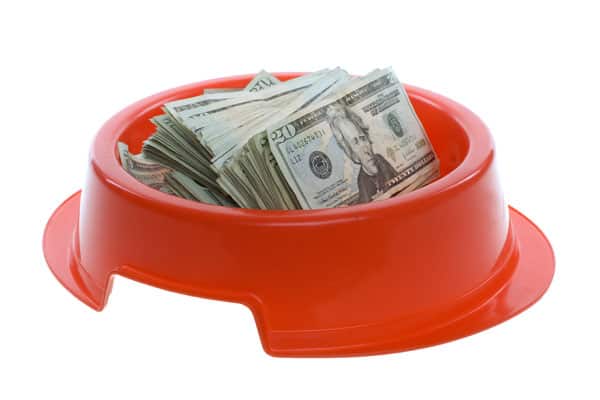
As the demand for fresh human grade dog food grows, more and more businesses are offering them - even delivered right to your doorstep.
This convenience doesn’t come cheap though.
Homemade dog food meals cost almost as much, or more, as some human meals, because well... they ARE human grade.
But if budget is not an issue for you, most homemade dog food offerings from companies are great quality.
Not all, but most.
And you will save a lot of time over having to do everything yourself.
It’s still important to do your research before choosing a food. Make sure to choose from an ethical company that has veterinary nutritionists behind the recipes.
Some homemade dog food owners occasionally purchase these pre-made meals to either give themselves a break or even to treat their special pooches to some new flavors.
If you need to travel, these packaged pre-made meals are usually conveniently packaged to make it easy for your dog’s doggy sitter.
Extra Steps To Ensure Diet Safety
To ensure that your dog gets the most benefit from their nutritional program, with the least chance of harm, it’s best to first consult with a veterinarian who is veterinary nutritionist or at least specializes in nutrition.
There may be a nutritionist in your area or you may connect with one online.
Certain veterinary nutritionist sites will provide complete nutrition consultations tailored to your dog - usually working in conjunction with your regular vet.
These consultations can be done over the phone, or depending where you live, in person.
The costs for these consultations, however, are substantial.
If you are a dog owner who will make a concerted effort to study the nutritional needs of your pet, you may be able to do without them - but at least consult with your vet as your dog may have special nutritional requirements.
Getting a Complete Blood Work Up

Another way to monitor the safety of your dog nutrition program is by first getting a complete blood work up of your dog.
If everything looks good, do a follow-up test three to four months after starting their nutrition regimen to check for any changes, good or bad.
Be sure to monitor your dog to see if any sudden changes occur after any changes in feeding.
Changes such as weight loss, weight gain, energy loss, gastrointestinal upset, coat issues should be noted and resolved immediately - preferably with the help of a veterinarian.
A good idea would be to log what you typically feed your dog and note any issues as you encounter them.
By keeping a detailed log, you may discover that your dog has certain food sensitivities which is helpful for future diet planning.

For example, when I first started feeding one of my Shiba Inus homemade food, I began to notice that she became noticeably itchy on occasion.
Because I had a log (not perfect, but detailed enough), I realized that she had a sensitivity to pork.
I stopped using pork in my meal plans and she improved immediately.
It’s good to note that most dogs don’t have true dog “allergies” - just food sensitivities.
Since symptoms of both food sensitivities and food allergies are similar, it can be difficult to tell what your dog has.
Just note that true food allergies can result in difficulty breathing and anaphylactic shock. If you sense your dog has a serious reaction to a food, get to a vet immediately.
What Science Can and Can’t Prove - Yet

Because commercial dog food has only been around for a relatively short amount of time, there have been no large scale studies to prove the safety of commercial dog food - especially over the long term.
So while it’s a known fact that vitamin and mineral deficiencies cause illness it is still not a known “fact” if certain commercial dog foods increases a dog's risk for illness - especially in the long term.
Why?
Because there are no large-scale finalized scientific studies that can prove this - yet.
Due to expenses, large-scale scientific studies are hard to come by - even human ones.
There can be serious implications to this.
Look at how long veterinarians took to change their vaccination protocol. In the meantime, millions of dogs were likely getting over-vaccinated simply because the “studies weren’t finalized yet”.
There is some hope for this change though.
There are a few studies on dog food that are happening on an international level.
Once such is a study that happend in Finland, led by Dr. Anna Hielm-Björkman, who has studied pet food and raw meat diets in pets for two decades.
Basically, the study measures homocysteine levels in dogs that are fed dry kibble or raw diet.
Homocysteine levels are disease “markers” and high levels indicate a higher likelihood of disease.
After six months, the dogs who were fed dry kibble had homocysteine levels roughly TEN times higher than the dogs that ate raw.
Wow.
Once this study is finalized, it could be the first pivotal step in proving the dangers of processed foods.
Unfortunately, as earlier mentioned, researching and then subsequently publishing the research costs a LOT of money.
Hopefully Dr.Hielm-Björkman and her team can secure enough funding to get this study out soon.
Scientific Studies on The Benefits of Fresh, Lightly Cooked / Raw Diets
As for completed scientific studies on fresh or raw complete / balanced diets ? So far, the studies done so far have been promising.
These studies are already showing the health benefits of a fresh diet versus extruded commercial kibble.

Here’s a short summary of the results of a few scientific studies on fresh dog food -
- Studies show that dogs fed fresh veggies at least three times a week reduced the growth of certain cancers
- Fresh diets are well tolerated by dogs with excellent palatability / digestibility
- Fresh fed dogs had lower overall triglycerides than kibble-fed dogs
- Feeding fresh / raw modified the fecal microbial community of healthy adult dogs.
Read the studies / articles here yourself -
Is Feeding Homemade Right For YOUR Shiba Inu?
You’ve just digested a ton of information about the in’s and out’s of homemade dog food and now must decide if you want to give it a try or not.
Feeding a dog or dogs homemade dog food is a big commitment and comes with a steep learning curve.
It also takes quite a bit of time, and in many cases, quite a bit of money.
If all of these factors don’t phase you one bit - then you’re the perfect candidate to prepare your Shiba uber healthy fresh meals.

A correctly balanced freshly prepared meal is exponentially better than balanced “kibble”, so we always recommend that route to the Shiba owner willing to commit.
However, if any of the above-mentioned factors gives you pause - you may want to ease into home cooking until you are sure you can do it properly.
Remember, as earlier mentioned, a dogs nutrition needs are more stringent than humans - so balance is very important.
Admittedly, for a long time, I was among one of the many dog owners who were getting it wrong.
I believed that since I was giving my Shiba such a high quality human grade diet with expensive meats, vegetables, and fruits (plus supplements such as fish oil, spirulina, etc) - I was doing "more" than enough.

It took a few years, but I finally learned absolutely everything I could about home feeding and realized that the diet I was preparing still lacked adequate calcium, and a few other vitamins and minerals such as vitamin E, D, Iodine...
These deficiencies are now corrected and I now realize why 90% of even the most devoted dog owners can fall short on this important task.
You Should Not Feed Your Shiba Inu Homemade If….
Simply put, you should not feed your Shiba Inu homemade food if you simply don’t have the time, dedication, and / or budget.
If you have two out of the three factors (time, dedication, budget) - you may be able to consider home feeding.
But only one out of three? Probably not a good idea.
Additionally, you should not feed homemade (on your own) if your Shiba has a medical condition that requires careful meal planning.

In this situation, I would highly recommend a fresh diet specifically prepared by a veterinary nutritionist, or provided by a company run by veterinary nutritionists.
The costs associated with a tailor-made diet addressing a medical condition is considerable but in my opinion, worth it for a Shiba with a health problem.
I would never ever recommend Shiba Inus of compromised health even the most premium dry kibble for the reasons mentioned in this article.
A dog in poor health should only receive the best nutrition (supervised by a vet nutritionist) that is made wholly of fresh and unprocessed ingredients.
Meals should also be easy to chew, easy to digest and appetizing to the dog.
If you find that you’re not a good candidate to provide a 100% fresh homemade meal - you could always compromise by simply adding fresh food to your dog’s normal (and hopefully premium) diet.
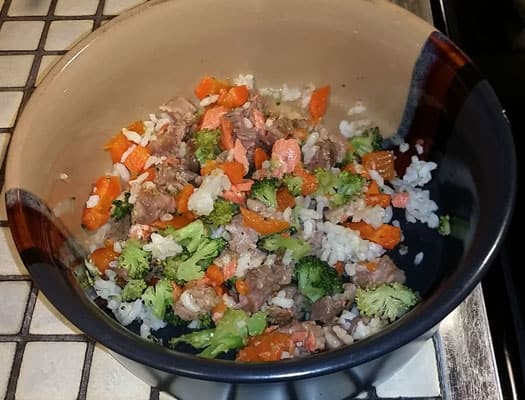
Remember, feeding your Shiba Inu is not an “all-or-nothing” kind of deal - any improvement helps.
Whether that means supplementing with real foods on occasion, buying homemade food on occasion, or making homemade food yourself on occasion - any little thing is better than nothing.
We did a perfect article on this topic, How To Feed Your Shiba Inu Better.
Step-By-Step Guide to Making Homemade Dog Food
First Steps - Where and How To Start
If you’ve read the ENTIRE post until here - congratulations! (actually even skimming to this point takes patience, so congratulations also)
By now, you’ve likely decided if you have - or don’t have what it takes to make homemade food for your Shiba Inu(s).
If you realize that you either just don’t have the time / budget / or skills to make homemade dog food - don’t sweat it.
You can still take small steps in improving your Shiba’s diet.
As earlier mentioned, even simply upgrading your Shiba’s current dog food to ‘a bit better’ is a great start.
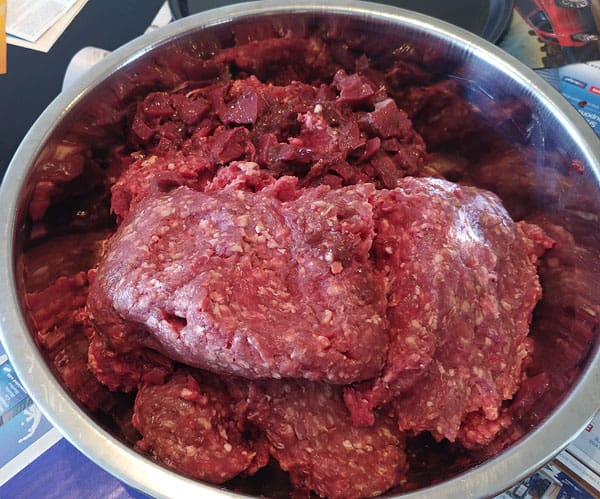
Going “Full Monty”
If you have decided you are “all in” for feeding your Shiba Inu fresh human grade food - that’s awesome!
To start, I recommend that you don’t go overboard when first starting. It’s much better to start slowly and just take on what you can comfortably handle.
Plus, starting slowly will allow your Shiba to acclimate the new diet comfortably.
Making the commitment to feed your dog fresh homemade food takes a lot of time, effort, and / or money. Don’t start too fast and burn yourself causing you to ditch the effort completely.
Instead, to get a “taste” of what feeding fresh looks like - follow this plan for newbies.
Introduction to Fresh Feeding
Initial Steps
- Learn how to properly balance your dog’s meals
Consider first buying ready-made homemade dog meals for a few weeks to better understand what is to be expected in the future
- This way you can slowly introduce the new food to your dog’s current diet
- You can see how your dog responds to the fresh food
- You can also monitor your dog’s health, activity level and mood.
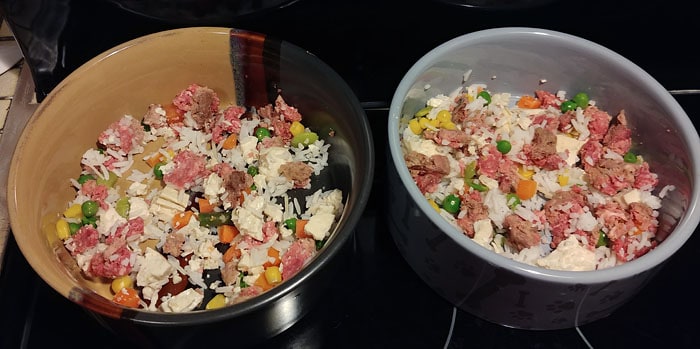
Guide To Feeding Your Shiba Inu a Homemade Meal For the First Time
Follow us along as we guide you in correctly preparing fresh and balanced homemade meals.
We’ll “virtually” hold your hand as we take you step-by-step through the entire process.
But First, Things To Keep in Mind
You have already taken a major leap into providing better nutrition to your Shiba Inu.
Just being aware and educated about dog nutrition and nutrition in general will help both you and your Shiba live a healthier life.
When first starting out, it’s important that you don’t overwhelm yourself all at once.
Start With Just a Few Meals a Week
Start slowly and be purposeful and mindful about all the steps you take. By doing so, you’ll maximize learning and efficiency.
Don’t stress to much about “going all in” in feeding homemade right from the start. It’s actually better to slowly incorporate homemade meals into your Shiba’s current diet to acclimate your Shiba to the diet changes.
And remember.
Even if you can only provide homemade meals a few times, or even once a week - it’ll still make a tremendous difference.
Don’t forget the clinical study about adding colorful veggies to your dog’s diet just a few times a week. This study conclusively showed that the addition of colorful veggies cut down the rates of cancer in the dogs in the study. That’s solid evidence to keep your mind on.
It’s highly recommended that you make a first ‘batch’ of homemade food where you can use some for feeding immediately and freeze the rest.
Let’s start!
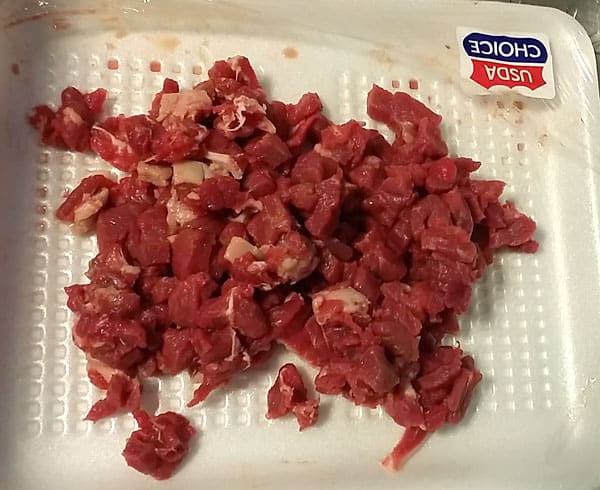
STEP #1 Shopping List:
Essential Supplies / Tools
- Coffee Grinder for eggshells (If you plan to make calcium from eggshells - otherwise you can purchase calcium separately, but we always recommend fresh sources of vitamins / minerals over synthetics)
- Zip bags, storage containers (BPA-free)
- Sharp kitchen scissors (super helpful for cutting food)
Nice To Have Supplies / Tools
- Food weight scale
- Vacuum sealer for longer freezer storage
Essential Supplements (You MUST buy)
Choose from the following:
- BalanceIT complete supplements
- Natures Farmacy Dogzymes Complete (Our recommended choice)
- Just Food For Dogs Nutrient Blend
Also Get All of These Supplements
- Fish Oil such as Dr. Tobias Fish Oil Supplement
- Dogzymes KA Calcium - (not needed if you plan on grinding eggshells for calcium requirement)
- Now Brand Organic Kelp Powder
- Carlson’s Wild Organic Cod Liver Oil
- You'll likely also need individual vitamins / minerals like: Iodine, vitamin E, vitamin D, etc. (depends on recipe)
Pantry Items You “Should” Always Have on Hand
Non-Refrigerated Essentials
- Canned sardines (Our favorite - Kirkland Organic Wild Caught Kosher Sardines in Olive Oil)
- Canned roast beef (Our favorite - Kirkland brand)
- Canned oysters
- Canned chicken breast
- Canned tuna (for occasional use)
- Canned pumpkin (natural - nothing added)
- Canned or dry beans
- Ground ginger
- Quinoa
- Brown rice
- Dried seaweed like Kombu
Refrigerated / Frozen
- Eggs (extra large or jumbo - bonus points for organic, free-range)
- Dry fresh Parmesan cheese (our favorite - Kirkland brand, 1lb)
- Frozen blueberries
- Frozen spinach
- Frozen green beans
- Frozen mixed vegetables
- Frozen carrots
- Ground Turkey
- Lean ground beef
- Skinless / boneless chicken breasts
- Ground beef liver
- Beef of chicken heart
- Beef heart - whole or ground
- Boneless / skinless chicken thighs
- Lean beef round roasts or cuts
- Natto (great for vitamin K)
The pantry item list is quite large, but hopefully you should already have some items from your current pantry.
You don’t need everything on this list, but try and stock up on a variety of these items to get started. Look out for good weekly sales. Costco has a lot of our favorite canned products like sardines, chicken breast, and roast beef.
It’s always great to have a bunch of canned ingredients on hand for the days when you just don’t have the time to defrost and prepare frozen and refrigerated items.
Try to stock up on ingredients, especially proteins, that you and your family normally eat.
If you know a local butcher - even better. At these establishments, you can get organs / offal and less desirable cuts of meat at a discounted price. Look out especially for beef heart, beef liver, and super lean cuts of meat.
Additionally, if you are planning to throw a little raw food in your Shiba’s diet, then you get raw, meaty bones, etc at these places also.
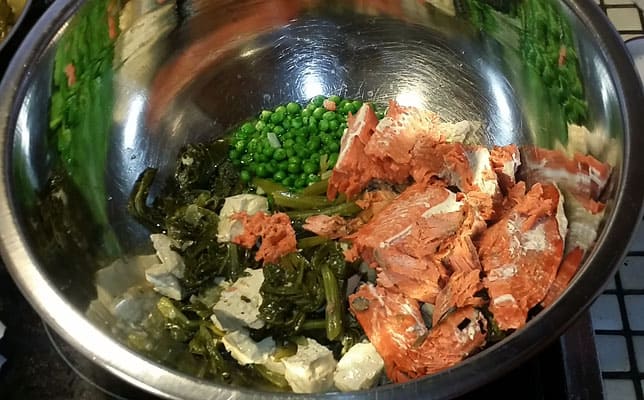
Ready To Assemble!
If you are completely new to feeding homemade you should always make batches of meals instead of preparing “as you go along”.
It’s much easier to ensure a batch of food is complete and balanced versus putting together a meal on the fly.
Plus you’ll save a bunch of time.
Decide On Your First Recipe.
Optimally, it would be ideal if you follow a veterinarian nutritionist's recipe tailored especially for your dog. But as earlier mentioned, these consultations can be cost prohibitive.
The second best option is to follow recipes that adhere to requirements of the AAFCO and are labeled as balanced.
I go a bit beyond AAFCO minimum requirements and try to follow the NRC's recommended minimums for dog food.
In our resources section, we list everything you need to either consult a veterinary nutritionist OR formulate a recipe yourself. (There are services that evaluate or even formulate dog food recipes for reasonable prices)
In our opinion, many of these services are great for complete newbies but may be a bit overkill for dog owners that are able to do a reasonable amount of research on their own.
All of the recipes that we provide are calculated "should be" complete and balanced according to AAFCO standards.
The only caveat is that we must state that since we are not veterinarian nutritionists - it's up to you to decide if you'd like to have the recipes further evaluated for nutritional balance.
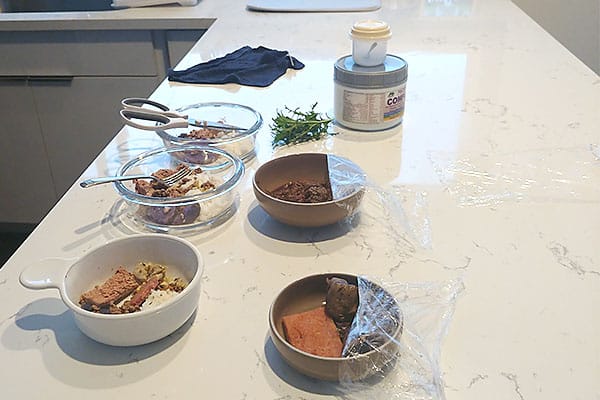
You CAN use Canned
Although using canned foods is not my first choice for my dogs - it’s still a great option for times when… we’ll there isn’t any time!
Human canned food is still exponentially better than wet dog food and even more so over kibble.
Keep canned food recipes on hand for when time is an issue or if you are out of fresher ingredients.
Also, most ingredients in canned recipes can be substituted for the frozen version. So if you have frozen carrots and frozen spinach, feel free to use those instead of the canned versions.
Note that not all substitutions are exact equivalents. Cooking can change levels of vitamins and minerals so be aware of that when deciding to use substitutions.
To be safe, simply input the ingredients in a nutrition counter like Cronometer
and see for yourself.
Remember, the less whole ingredients you include in a recipe, the more likely you’ll need additional supplements to ensure proper balance. (Don’t forget to purchase the correct supplements mentioned above before making the meals).
But we've got you covered as we have recipes ranging from all whole foods to uber-simple recipes that utilize more supplements.
Everyone has different situations at different times, so it’s great to know you have the ability to find a recipe that works for you.
Our Go To “E-Z Beefy”
Our E-Z Beef recipe is probably one of my favorite balanced homemade dog food recipe.
We spent more time than we’d care to admit in making sure that the meal is both balanced AND easy to make.
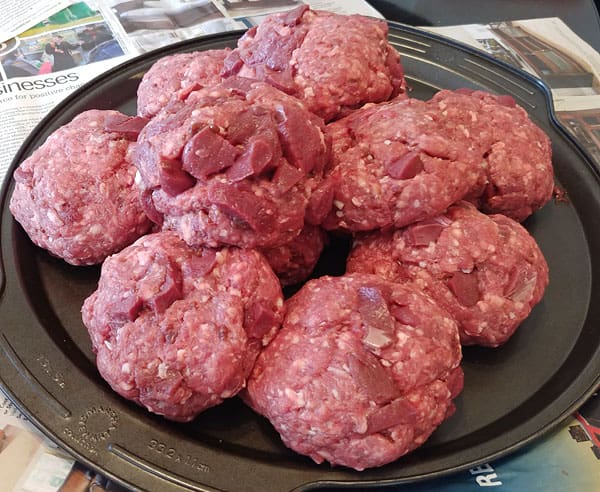
EZ Beef Recipe:
This recipe utilizes pantry items that you’d normally have available and fresh ground beef.
You can substitute the canned ingredients if for frozen / fresh if you’re sure the nutrients are basically the same.
The great thing about this recipe is that more than 95% of this recipe is balanced with whole food ingredients and only needs a touch of supplementation to completely balance the recipe.
- Ground beef, 93% lean - 8lbs
- Beef heart, 26 ounces
- Beef liver, 4 ounces
- Sardines canned in water, 3.4ounces x 4 cans
- Oysters canned (8 ounce) x 1
- Spinach, frozen, 16 ounces
- Red bell peppers, 3 medium
- Carrots, frozen, 20 ounces
- Quinoa, cooked x 4 cups
Supplements: - Now Kelp Powder 5 level scoops
- Eggshell powder 6.5 teaspoons OR Now, Calcium Carbonate powder, 4 teaspoons
- Dogzymes Complete Supplement34 grams or approximately 5 teaspoons
- Dropi, Pure Icelandic Cod Liver Oil, Extra Virgin, 6 teaspoons
Preparation:
- Lightly cook all raw ingredients except canned foods (ground beef, liver, hearts, veggies, etc)
- Cook quinoa
- Let cool in the fridge overnight
- Next day, cut and or chop / grind
- Mix thoroughly (do not smash)
- Add supplements (you may choose to add supplements later at feeding time)
- Pack em up!
Package the meal in either plastic zip-top bags or your choice of storage. I like BPA-free reusable rectangle containers with lids.
Tip - If using zip bags, flatten the bags completely before freezing to both save space in your freezer and allow for quick thawing
I recommend using a size that allows you to use all of the food within three to four days.
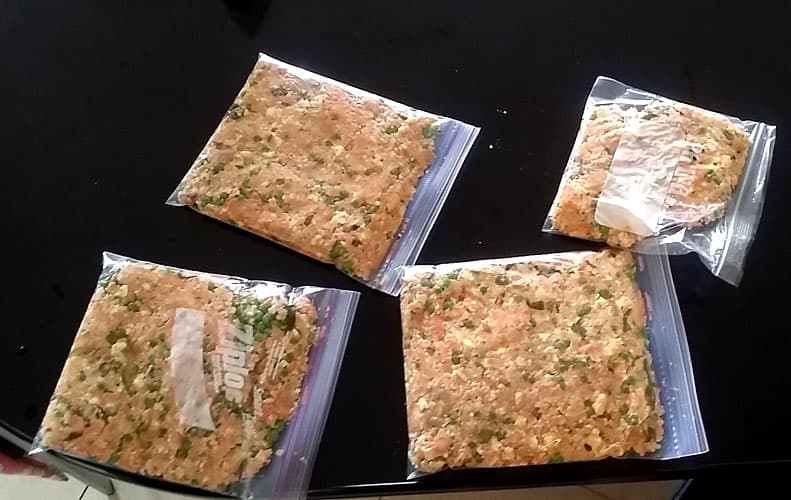
Rotating Diet Menus
To ensure that your dog continuously receives balanced nutrition, it’s highly recommended to rotate their diets fairly regularly.
For example, for my next batch I may choose to use ground turkey, chicken thigh meat, etc.
This was a whopper of an article!
Sit tight as we finish up more content and additional homemade recipes. Stay cool.
Stay doge.
Homemade Dog Food Resources:
Homemade Dog Food Supplements:
Ready Made Homemade Dog Food:
Veterinarian Nutritionists
- https://acvn.org/nutrition-consults/
- https://acvn.org/directory/
- https://www.petdiets.com/about
- https://secure.balanceit.com/info/acvnecvcn.php?
- https://vet.osu.edu/vmc/companion/our-services/nutrition-support-service/home-made-diets
Additional Information
- http://dogaware.com/diet/dogfoodmixes.html
- https://rawfedandnerdy.com/
- https://pets.webmd.com/dogs/guide/homemade-dog-food#1
- https://www.petmd.com/dog/nutrition/how-make-sure-your-homemade-dog-food-delivers-right-nutrients
- https://www.thefarmersdog.com/diy
- https://www.planetpaws.ca/category/pet-food-and-treat-recipes/
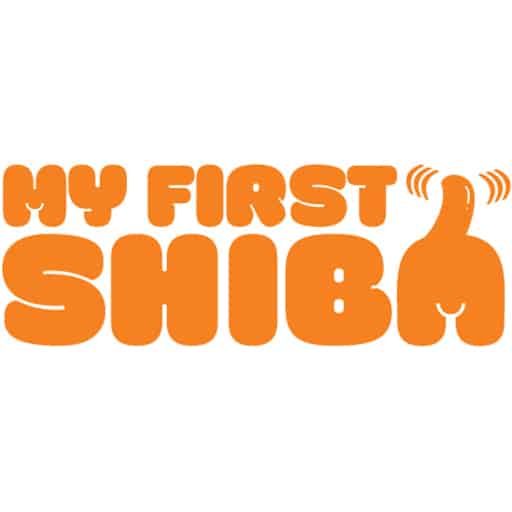
Thanks for visiting Myfirstshiba.com! We do our very best in providing our readers with awesome content about our beloved Shiba Inu breed. Some of our articles include reviews and recommendations to our favorite products. We do earn commissions from affiliate links that help support our work and mission. Thanks again for visiting. Shiba Kisses To All!
